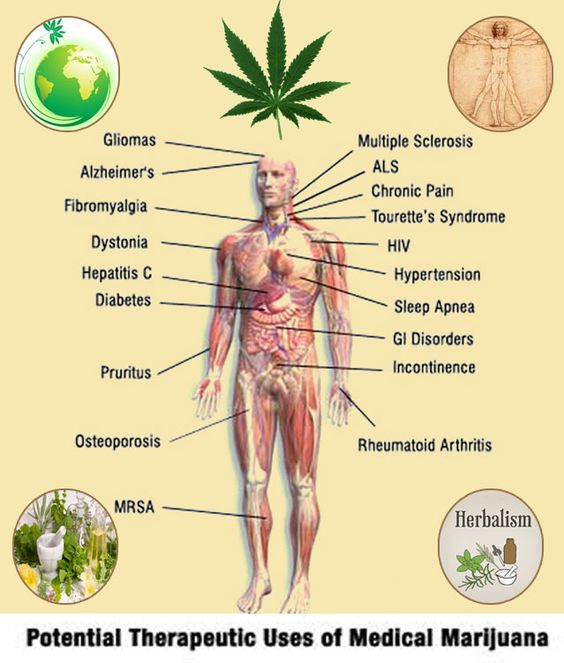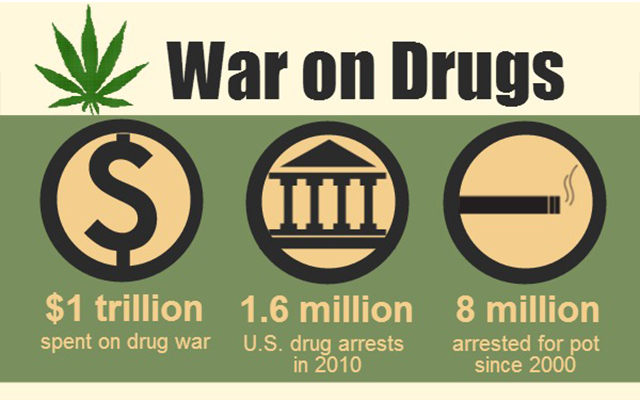A rather polar political topic, the harmful use marijuana is largely misunderstood by the largely uninformed public. I just want to go on the record as saying I am not a “pothead” and have never tried marijuana, nor do I intend to. Much in the same mindset, I have no taste for alcohol or desire to use tobacco products. My objection to the current law is the combination of science and irrational views of the topic.
Colorado, Oregon, Washington State, and Washington D.C. have all legalized the recreational use of marijuana with many more states legalizing the use of medical marijuana (some restrictions). However, federal laws restricting the use of marijuana completely, are still in the books. This means that even if your state legalizes the drug, it is still against federal law.

Cannabis, as called so in the U.S., was regularly used in medicines up to the early 1900’s. During this time, there was an influx of Mexican immigrants into the country. Many came into the country with the drug “marihuana” which was a foreign name to Americans. This drug was seen as an essential part of their culture. Little did the American public know, the Mexican “marihuana” and the American “cannabis” were the exact same thing.
El Paso, Texas was a largely considered destination for these immigrants. For that reason, the city followed the same strategy as San Francisco did decades earlier in response to Chinese immigrants and the subsequent outlawing of opium. The demonization of marijuana was a direct extension of the demonization of Mexican immigrants. The government wanted an excuse to detain and deport immigrants, and that excuse became marijuana.
Prohibition of alcohol was repealed by the 21st amendment in 1933. Enforcement was initially assigned to the Internal Revenue Service (IRS) and was later transferred to the Justice Department. Losing their power to enforce laws against alcohol consumption and running out of partisan support, the regulatory agencies pushed for laws against cannabis. After a push to outlaw the plant, the Marijuana Tax Act of 1937 accomplished just that, banning its use and sale.
So, which is worse for you, marijuana or alcohol? This is where the science comes into play. Yes, alcohol is a drug. Alone, alcohol poisoning kills 6 people a day. That’s not to mention the countless numbers who die due to accidents involving alcohol consumption. According to Judge Francis L. Young in a 1988 DEA brief “marijuana consumption would need to exceed 1,500 pounds in 15 minutes to be fatal.” Everyone knows what tobacco can do to you, and if you still use tobacco products, a life re-evaluation is in order.
The biggest criticism here is the claim the marijuana is a “gateway drug.” This is a huge misunderstanding perpetrated by the media. Yes, marijuana is a gateway drug, but not to the understanding of the public mind. This is much like the differences in the public and scientific definition of a “theory.” Findings by National Institute on Drug Abuse (NIH) are consistent with the idea of marijuana as a “gateway drug.” However, the majority of people who use marijuana do not go on to use other, “harder” substances, which is the public definition of a gateway drug. The term, in this sense, accounts for the heightened response to any other drugs. This “cross-sensitization,” as noted in the findings, is not unique to marijuana.” Alcohol, nicotine, and caffeine all prime the brain for a heightened response to other drugs and are, like marijuana, also typically used before a person progresses to other, more harmful substances, although most who use marijuana DO NOT go on to introduce other, harder drugs into their lives.
Many studies cite the actual “gateway drug” in the sense known to the American public is actually alcohol. The Journal of School Health released a study on this matter. The study looked at 2835 students and the findings underscore the importance of screening for substance use. Even among youth enrolled in elementary/middle school, the results were astounding. The study found that school prevention programs should begin in elementary school (third grade) and target alcohol use due to the likelihood of substance abuse by age 18.
A person’s social environment is the main cause of advancing to harder drugs. An alternative to the gateway-drug hypothesis is that people who are more vulnerable to drug-taking due to their social environment are simply more likely to start with readily available substances like marijuana, tobacco, or alcohol, and at a very young age (13). Interactions with other substance users increase the chances of trying other drugs.

The decriminalization of marijuana is the main player in this argument. Many countries have gone this far, with great outcomes. This would allow for a dramatic decrease in the money spent towards low-level drug enforcement and allow for the government to focus on helping those addicted to more dangerous drugs. Decriminalization would also reduce harm in society. Enforcement of the laws disproportionately harms young people and people of color, sponsors massive levels of violence and corruption, and fails to curb youth access to the drug. To sum it all up, the War on Drugs is a failure. Another effect of the new drug market would be a growth in the economy. Cannabis would become the largest cash crop under the rule of law, creating countless jobs in the industry.
An all-out legalization of marijuana, a substance that is much less dangerous than that of tobacco and alcohol, would allow for great increases in tax revenue (upwards of $7.5 Billion a year) and severely cut the costs associated with enforcing the current laws which do not work.
Let us know what you think! Like us on Facebook and follow us on twitter!












